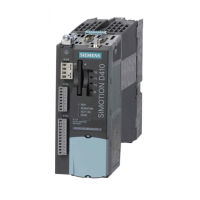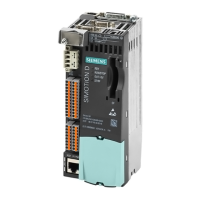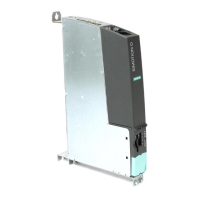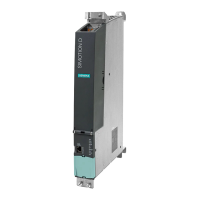Parameter assignment / addressing
5.6 Configuring PROFINET IO
SIMOTION D4x5-2
138 Commissioning and Hardware Installation Manual, 02/2012
5.6 Configuring PROFINET IO
5.6.1 General information about communication via PROFINET IO
Communication cycle
In PROFINET, the communication cycle is subdivided into different, time-specific intervals.
The first interval is used for isochronous real-time communication (IRT), followed by
real-time communication (RT) and standard TCP/IP communication. The bandwidth
reservation for IRT ensures that RT communication and standard communication have no
effect on the transmission of IRT message frames, which are important for motion control
applications.
The following figure shows how the PROFINET communication cycle is divided into
isochronous real-time communication (IRT), real-time communication (RT), and standard
TCP/IP communication.
,57LQWHUYDO ,57
LQWHUYDO
,57LQWHUYDO
,VRFKURQRXVFRPPXQLFDWLRQ 57FRPPXQLFDWLRQ
6WDQGDUGFRPPXQLFD
WLRQ
&\FOH
&\FOH
WLPHZLQGRZ
&\FOHQ
,57GDWD
57'DWD
7&3,3GDWD
7&3,3 7&3,3 7&3,3
Figure 5-7 PROFINET communication cycle
Isochronous real-time Ethernet
STEP 7 can be used to configure PROFINET devices supporting data exchange via
isochronous real-time Ethernet (IRT). IRT message frames are transmitted deterministically
via planned communication paths in a defined sequence to achieve the best possible
synchronism and performance.
IRT requires special network components supporting a planned data transmission.

